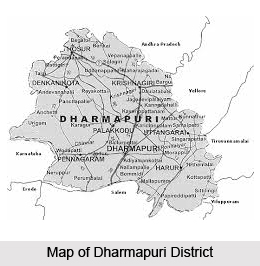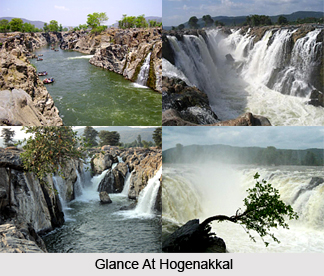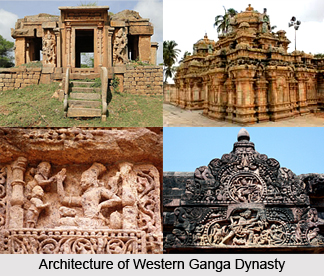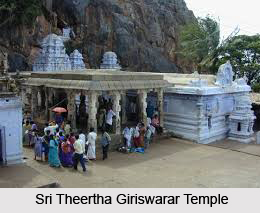 Dharmapuri District is situated in the southern state of Tamil Nadu. Dharmapuri District has a population of 2,856,300 according to the 2001 census report. Dharmapuri is the district headquarters. After independence, Dharmapuri was a part of the Salem District. Krishnagiri District which was previously a part of Dharmapuri district became a separate district in 2004. The main languages spoken in the district are Tamil, Kannada language, Telegu language and Urdu language.
Dharmapuri District is situated in the southern state of Tamil Nadu. Dharmapuri District has a population of 2,856,300 according to the 2001 census report. Dharmapuri is the district headquarters. After independence, Dharmapuri was a part of the Salem District. Krishnagiri District which was previously a part of Dharmapuri district became a separate district in 2004. The main languages spoken in the district are Tamil, Kannada language, Telegu language and Urdu language.
Location of Dharmapuri District
The total geographical area of Dharmapuri District is 4497.77 sq kms that is 3.46 percent of the total area of Tamil Nadu. Dharmapuri district is situated in the north western corner of Tamil Nadu and is bounded by Tiruvannamalai District and Vellore District on the east, Salem District on the South,
 Krishnagiri District on the north and Kaveri River on the west. It is located between north latitude 11 degree 47 minutes and 12 degree 33 minutes and east longitudes 77 degree 2 minutes and 78 degree 40 minutes.
Krishnagiri District on the north and Kaveri River on the west. It is located between north latitude 11 degree 47 minutes and 12 degree 33 minutes and east longitudes 77 degree 2 minutes and 78 degree 40 minutes.
History of Dharmapuri District
The earliest known chieftain, who ruled Tagadur (present Dharmapuri) during the Sangam era, is Adigaman Naduman Anji, whose patronage sustained the famous poetess Avvaiyar. The Western Gangas are also mentioned as having ruled Baramahal during the end of the 8th century. The last Mysore war in 1799 added up several places in Hosur Taluk like Nilgiri, Anjetti, Durgam, Ratnagiri and Kelamangalam which were recaptured by British. After the fall of Srirangapattinam in which Tipu Sultan lost his life, the Balaghat area was also added to Salem District. The present Dharmapuri District was then a part of the Salem district. During the British rule in the country and even till 1947 Dharmapuri was one of the Taluks of Salem District. Dharmapuri District was formed on 2nd October, 1965 with its headquarters at Dharmapuri. Dharmapuri District was bifurcated into Dharmapuri and Krishnagiri districts on 9th September, 2004.
Geography of Dharmapuri District
The climate of the Dharmapuri District is generally warm. The climate of the district is generally warm and the temperature varies from 12 degree Celsius to 35 degree
 Celsius and receives an annual rainfall of 80 cm. The hottest period of the year is generally from the months of March to May, the highest temperature going up to 38 degree Celsius in April. The climate becomes cool in December and continuous so up to February, touching a minimum of 17 degree Celsius in January. On an average Dharmapuri District receives an annual rainfall of 895.56 mm. The soil type ranges from black to mixed loam; Red sandy soils are seen in Harur Taluk. Black and loam soil are found in Dharmapuri Taluk. Generally, the soil is low in Nitrogen and Phosphate content with no marked variation between Taluks. The district is rich in mineral deposit like apatite, copper, corundum, gold, iron, limestone, magnetite, nickel, quartz, vermiculite, black granite and grey granite.
Celsius and receives an annual rainfall of 80 cm. The hottest period of the year is generally from the months of March to May, the highest temperature going up to 38 degree Celsius in April. The climate becomes cool in December and continuous so up to February, touching a minimum of 17 degree Celsius in January. On an average Dharmapuri District receives an annual rainfall of 895.56 mm. The soil type ranges from black to mixed loam; Red sandy soils are seen in Harur Taluk. Black and loam soil are found in Dharmapuri Taluk. Generally, the soil is low in Nitrogen and Phosphate content with no marked variation between Taluks. The district is rich in mineral deposit like apatite, copper, corundum, gold, iron, limestone, magnetite, nickel, quartz, vermiculite, black granite and grey granite.
Culture of Dharmapuri District
The inhabitants of Dharmapuri District speak different languages. The predominant communities found in this area are the Kapus, Lingayaths, Okkaligas, Baliya Chetties, Oddars and Scheduled Castes like Holeyas and Madigas. The weavers of this area mostly belong to Sali Chetties. The Baramahal area comprising eastern part of Dharmapuri taluk constitutes Telugu and Tamil speaking communities, majority of whom belong to Vanniars. Among the Scheduled Caste population Adi-Dravidars and Arunthathiars form major share scattered throughout the district.
Tourism in Dharmapuri District
 Dharmapuri District is widely known for its tourist spots. It is one of the renowned tourist destinations of Tamil Nadu. People from far and wide come and explore the places of interest offered by Dharmapuri District. The district is also an ideal tourist destination in the state. Some of the attractions of Dharmapuri district are Hogenakkal Falls, Adhiyamankottam, Subramanya Siva Memorial at Papparapatti, Rajaji Memorial at Thorapalli, Krishhnagiri Dam and the Theerthagirishwarar Temple at Theerthamalai. Hogenakal is situated at the borders of Karnataka at 46 kms from Dharmapuri and is one of the main tourist spots of the district. Theerthamalai is an important sacred place in Harur taluk of Dharmapuri District. All these places are worth visiting.
Dharmapuri District is widely known for its tourist spots. It is one of the renowned tourist destinations of Tamil Nadu. People from far and wide come and explore the places of interest offered by Dharmapuri District. The district is also an ideal tourist destination in the state. Some of the attractions of Dharmapuri district are Hogenakkal Falls, Adhiyamankottam, Subramanya Siva Memorial at Papparapatti, Rajaji Memorial at Thorapalli, Krishhnagiri Dam and the Theerthagirishwarar Temple at Theerthamalai. Hogenakal is situated at the borders of Karnataka at 46 kms from Dharmapuri and is one of the main tourist spots of the district. Theerthamalai is an important sacred place in Harur taluk of Dharmapuri District. All these places are worth visiting.
A number of industries are also located here. The district is also the largest producer of mango and accounts for one half of the mango yield in the state. Dharmapuri District is the second largest producer of tomato and accounts for 22 percent of the total area of the state.






